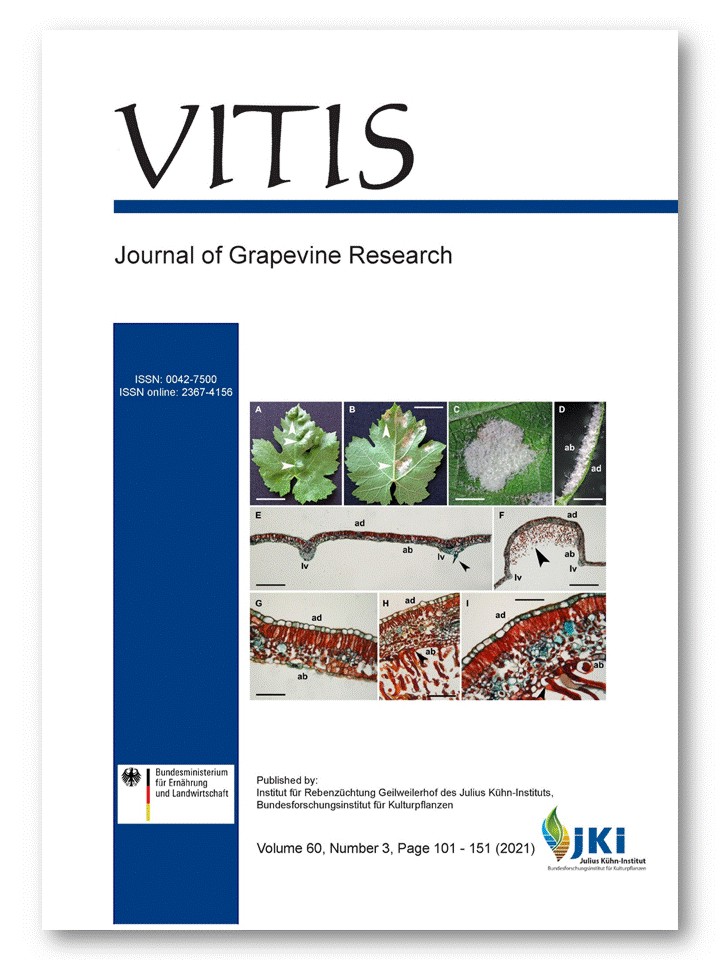Texture properties and phenol extractability indices of the grape berry under pre- and post-veraison water deficit (Vitis vinifera L. 'Kékfrankos')
DOI:
https://doi.org/10.5073/vitis.2021.60.125-135Abstract
Optimal water supply is one of the most important factors in quality wine making. However, water availability is limited in several wine regions and water shortage is getting even worse due to climate change, especially under arid climate conditions. Therefore, proper water management of the vineyards, the amount and the timing of irrigation will play a crucial role in sustainable viticulture in the near future. In this study, the effect of timing of moderate water deficit on berry texture characteristics and phenolic maturity were investigated. 'Kékfrankos' grapevines were submitted to different water regimes: moderate water deficit from berry set until veraison (WD1), moderate water deficit from veraison until harvest (WD2), no water deficit (C). Concentration of the phenolic components of the grape berry skins and berry mixture for the Glories indices were measured by spectrophotometer (UVmini-1240 CE UV-VIS, Shimadzu, Japan). Cell and seed maturity indices (CMI%, SMI%) were also calculated. Berry texture characteristics were monitored by a TA.XT Plus Texture Analyser (Stable Micro System, UK). Berry skin and seed texture properties were affected by water regimes. Skin and seed hardness of WD1 were significantly lower than those of WD2. Significant differences were found in berry hardness between the treatments (C>WD1>WD2). Berry gumminess, resilience and chewiness of WD2 were lower compared to C and WD1. Anthocyanin extractability was higher when plants were not subjected to post-veraison water limitations (WD1). Furthermore, the seed maturity index was lower when water deficit occurred between berry set and veraison. Pre-veraison water deficit resulted in delayed ripening, softer seeds and thus higher phenol extractability compared to WD2 and C. Late seasonal water deficit resulted in thicker skins, which was accompanied by lower anthocyanin extractability than in WD1 and C. It seems that anthocyanin extractability is influenced by the actual water status of the grapevine rather than skin textural properties. However, there are some connections between skin texture parameters and maturity indices.
Downloads
Published
Issue
Section
License
Copyright (c) 2021 The Author(s)

This work is licensed under a Creative Commons Attribution 4.0 International License.
The content of VITIS is published under a Creative Commons Attribution 4.0 license. Any user is free to share and adapt (remix, transform, build upon) the content as long as the original publication is attributed (authors, title, year, journal, issue, pages) and any changes to the original are clearly labeled. We do not prohibit or charge a fee for reuse of published content. The use of general descriptive names, trade names, trademarks, and so forth in any publication herein, even if not specifically indicated, does not imply that these names are not protected by the relevant laws and regulations. The submitting author agrees to these terms on behalf of all co-authors when submitting a manuscript. Please be aware that this license cannot be revoked. All authors retain the copyright on their work and are able to enter into separate, additional contractual arrangements.



